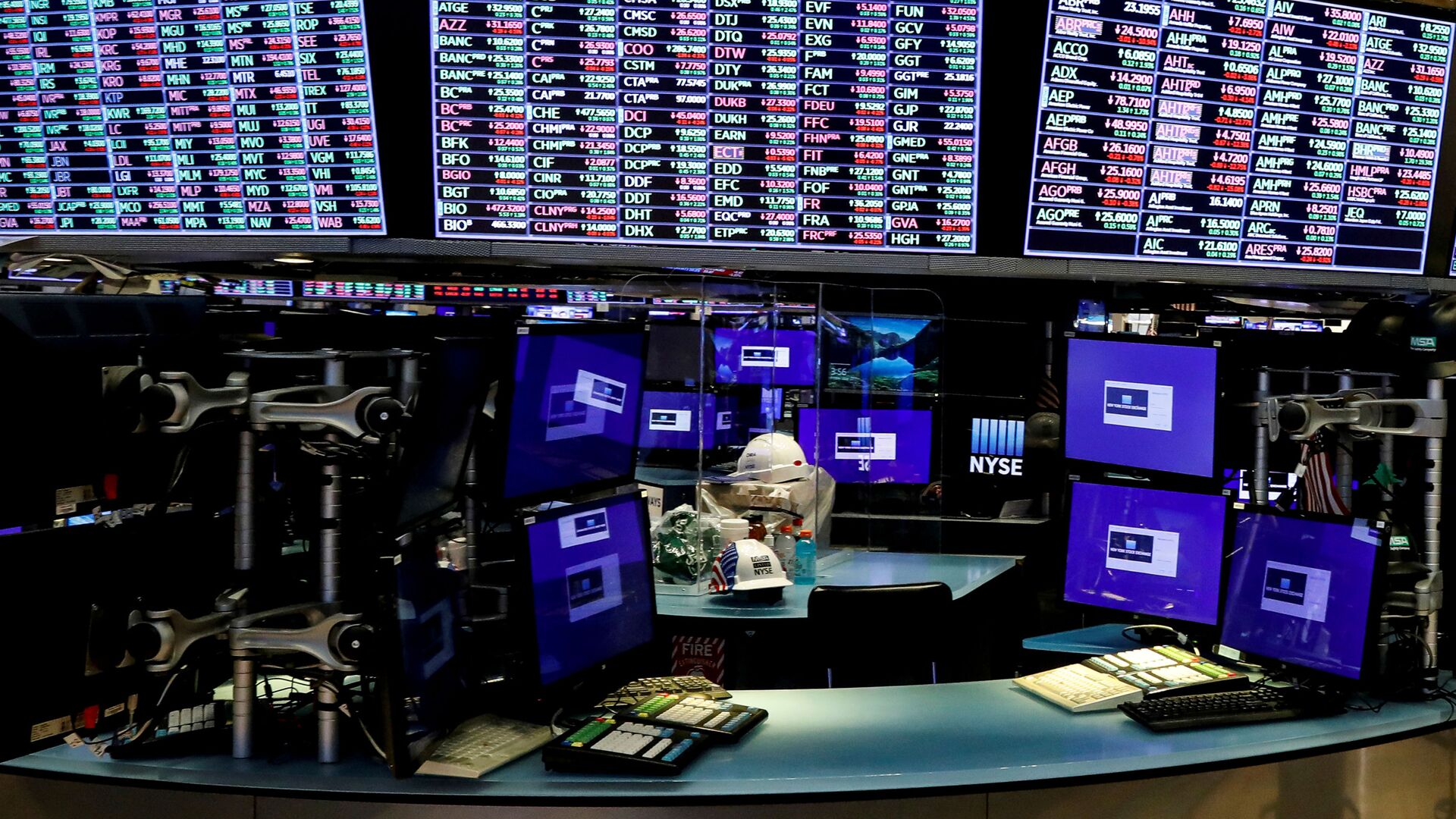https://sputnikglobe.com/20210928/us-tech-stocks-down-most-since-march-as-inflation-rate-hike-worry-roil-wall-street-1089496628.html
US Tech Stocks Down Most Since March as Inflation, Rate Hike Worry Roil Wall Street
US Tech Stocks Down Most Since March as Inflation, Rate Hike Worry Roil Wall Street
Sputnik International
NEW YORK (Sputnik) - Wall Street’s high-flying tech sector suffered its worst beating in six months on Tuesday while blue chip and industrial-based stocks... 28.09.2021, Sputnik International
2021-09-28T20:51+0000
2021-09-28T20:51+0000
2022-08-06T13:24+0000
business
wall street
pandemic
federal reserve
us stocks
us
https://cdn1.img.sputnikglobe.com/img/07e5/03/05/1082268490_0:160:3073:1888_1920x0_80_0_0_c783653b7a9e4a9fd95d1d355527af2a.jpg
The Nasdaq Composite Index, led by Big Tech names such as Facebook, Amazon, Apple, Netflix and Google, finished down 423 points, or 2.8%, at 14,547. It was Nasdaq’s worst-one day loss since March.The blue-chip S&P 500, which groups the top 500 stocks on the New York Stock Exchange, settled down 87 points, or 2%, at 4,356.The broad-based Dow Jones Industrial Average, comprising mostly industrial stocks, lost almost 570 points, or 1.6%, to finish 34,300.The yield on the benchmark US 10-year Treasury note was at 1.54% by 4:00 PM Eastern US time (19:00 GMT), rising 2% in just under a week from a reset of inflation expectations. The yield is seen as a measure of real inflation.At his news conference after the Fed’s September policy meeting last week, Chairman Jerome Powell suggested mid-2022 as an appropriate target for concluding the central bank’s monthly bond-buying of $120 billion. The Fed’s so-called dot-plot plan also called for interest rates, suppressed at near-zero since the Covid-19 outbreak, to be raised any time next year onwards, he said.Since then, Fed officials have issued mixed messaging on the timeline for both the taper and rate hike. Powell has admitted that inflation was trending above the Fed’s 2% per annum target but said that was transitory and will abate over time. He reiterated that before a Senate banking committee on Tuesday, although he admitted that supply chain issues resulting from the COVID-19 pandemic need to be resolved before inflation can be mitigated.
Sputnik International
feedback@sputniknews.com
+74956456601
MIA „Rosiya Segodnya“
2021
Sputnik International
feedback@sputniknews.com
+74956456601
MIA „Rosiya Segodnya“
News
en_EN
Sputnik International
feedback@sputniknews.com
+74956456601
MIA „Rosiya Segodnya“
Sputnik International
feedback@sputniknews.com
+74956456601
MIA „Rosiya Segodnya“
business, wall street, pandemic, federal reserve, us stocks, us
business, wall street, pandemic, federal reserve, us stocks, us
US Tech Stocks Down Most Since March as Inflation, Rate Hike Worry Roil Wall Street
20:51 GMT 28.09.2021 (Updated: 13:24 GMT 06.08.2022) NEW YORK (Sputnik) - Wall Street’s high-flying tech sector suffered its worst beating in six months on Tuesday while blue chip and industrial-based stocks tumbled too on fears the Federal Reserve will be pressured to raise interest rates sooner rather than later to arrest galloping inflation.
The Nasdaq Composite Index, led by Big Tech names such as Facebook, Amazon, Apple, Netflix and Google,
finished down 423 points, or 2.8%, at 14,547. It was Nasdaq’s worst-one day loss since March.
The blue-chip S&P 500, which groups the top 500 stocks on the New York Stock Exchange, settled down 87 points, or 2%, at 4,356.
The broad-based Dow Jones Industrial Average, comprising mostly industrial stocks, lost almost 570 points, or 1.6%, to finish 34,300.
“There is a lot of drama happening on Wall Street and most of it has to do with a reset of inflation expectations,” said Ed Moya, an analyst at online trading platform OANDA. “This surge in Treasury yields is kryptonite for the Nasdaq and will ultimately drag down growth forecasts. The Fed was willing to tolerate a little inflation overshoot, but the current energy crunch could force a major pivot before the end of the year.”
The yield on the benchmark US 10-year Treasury note was at 1.54% by 4:00 PM Eastern US time (19:00 GMT), rising 2% in just under a week from a reset of inflation expectations. The yield is seen as a measure of real inflation.
At his news conference after the Fed’s September policy meeting last week, Chairman Jerome Powell suggested mid-2022 as an appropriate target for concluding the central bank’s monthly bond-buying of $120 billion. The Fed’s so-called
dot-plot plan also called for interest rates, suppressed at near-zero since the Covid-19 outbreak, to be raised any time next year onwards, he said.
Since then, Fed officials have issued mixed messaging on the timeline for both the taper and rate hike. Powell has admitted that inflation was trending above the Fed’s 2% per annum target but said that was transitory and will abate over time. He reiterated that before a Senate banking committee on Tuesday, although he admitted that supply chain issues resulting from the COVID-19 pandemic need to be resolved before inflation can be mitigated.



